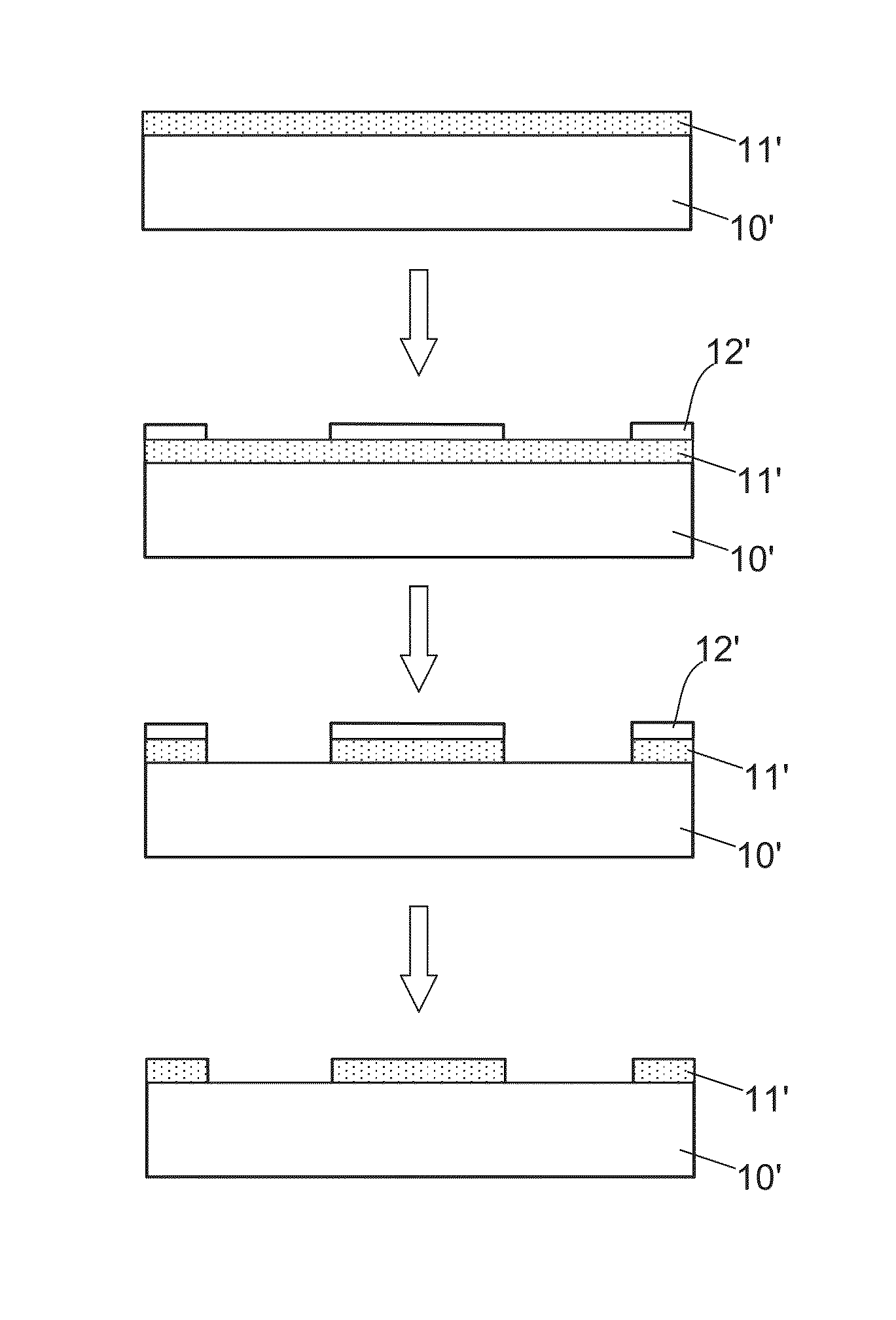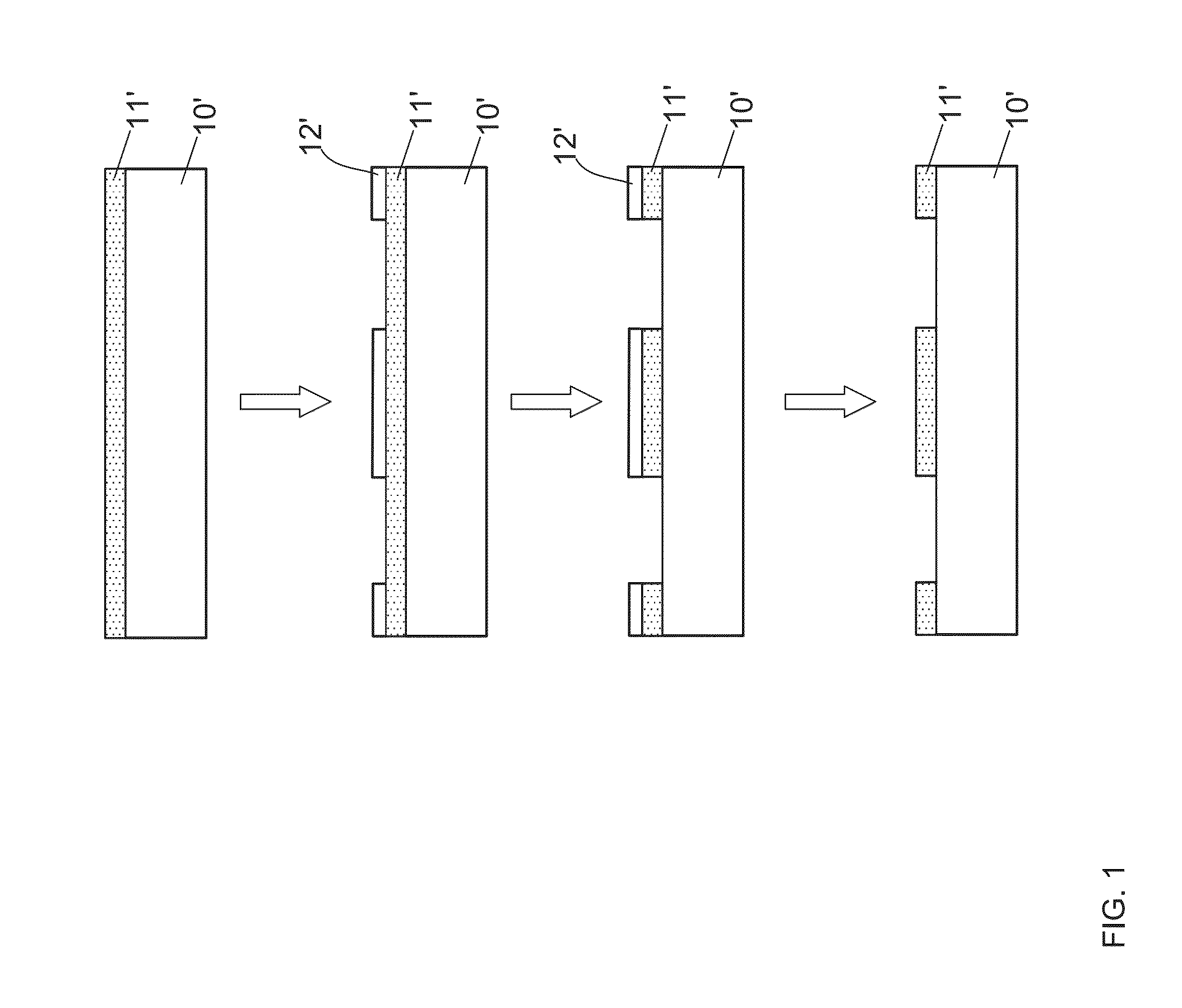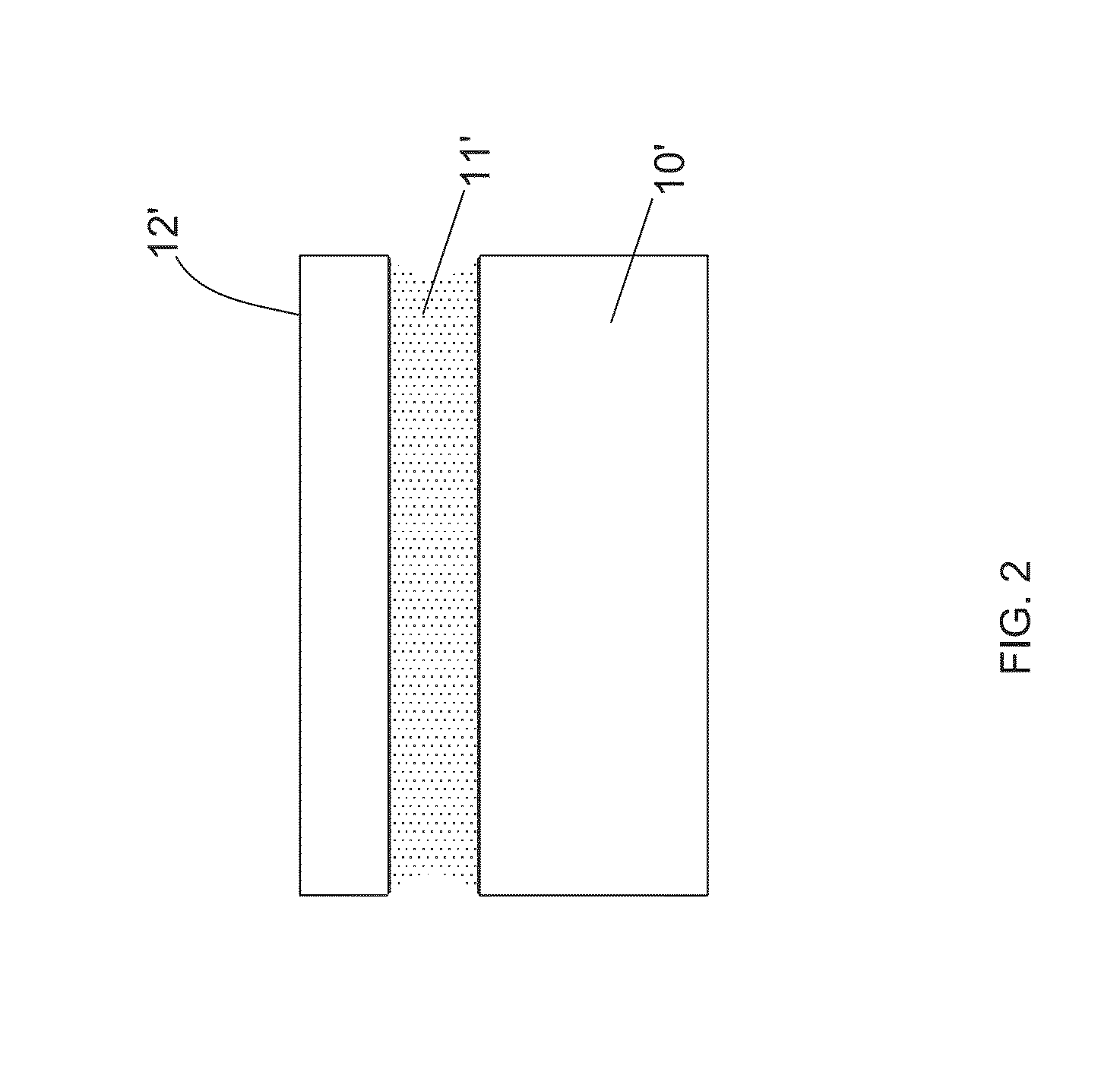Etching solution capable of effectively reducing galvanic effect
a technology of effective reduction and galvanic effect, applied in the field of etching solution, can solve the problems that the application of consumptive electronic products such as cooper wires to traditional printed circuit boards cannot be affordable, and achieve the effect of effective reduction of galvanic effect and higher reduction potential
- Summary
- Abstract
- Description
- Claims
- Application Information
AI Technical Summary
Benefits of technology
Problems solved by technology
Method used
Image
Examples
experiment i
[0083]In experiment I, a 10% sulfuric acid and a 3% hydrogen peroxide are dissolved in the water for blending a first control etching solution; on the other hand, a 10% sulfuric acid, a 3% hydrogen and a 1,5-diphenyl tetrazole are dissolved in the water for blending a first experiment etching solution, wherein the 1,5-diphenyl tetrazole is represented by following chemical formula (19),
[0084]
[0085]Please refer to FIG. 6, which illustrates a microscopic diagram of the copper layer of experiment I, wherein the microscopic diagram of the experimental group and the control group of the copper layer before treating the wet etching process shows in FIG. 6(a1) and FIG. 6(b1), respectively. Then, it is treating a wet etching process to the first control group and the first experimental group shown in FIG. 4(a) by the first control etching solution and the first experiment etching solution, respectively. After being treating the wet etching process 30 s and 60 s, as shown in FIG. 6(a2) and F...
experiment ii
[0086]Moreover, in experiment II, a 10% sulfuric acid and a 3% hydrogen peroxide are dissolved in the water for blending a second control etching solution; on the other hand, a 10% sulfuric acid, a 3% hydrogen and a 1-phenyl-1,2,4-triazole are dissolved in the water for blending a second experiment etching solution, wherein the 1-phenyl-1,2,4-triazole is represented by following chemical formula (20),
[0087]
[0088]Please refer to FIG. 7, which illustrates a microscopic diagram of the copper layer of experiment II, wherein the microscopic diagram of the experimental group and the control group of the copper layer before treating the wet etching process shows in FIG. 7(a1) and FIG. 7(b1), respectively. Then, it is treating a wet etching process to the first control group and the first experimental group shown in FIG. 4(a) by the first control etching solution and the first experiment etching solution, respectively. After being treating the wet etching process 30 s and 60 s, as shown in ...
PUM
| Property | Measurement | Unit |
|---|---|---|
| height | aaaaa | aaaaa |
| height | aaaaa | aaaaa |
| reduction potential | aaaaa | aaaaa |
Abstract
Description
Claims
Application Information
 Login to View More
Login to View More - R&D
- Intellectual Property
- Life Sciences
- Materials
- Tech Scout
- Unparalleled Data Quality
- Higher Quality Content
- 60% Fewer Hallucinations
Browse by: Latest US Patents, China's latest patents, Technical Efficacy Thesaurus, Application Domain, Technology Topic, Popular Technical Reports.
© 2025 PatSnap. All rights reserved.Legal|Privacy policy|Modern Slavery Act Transparency Statement|Sitemap|About US| Contact US: help@patsnap.com



